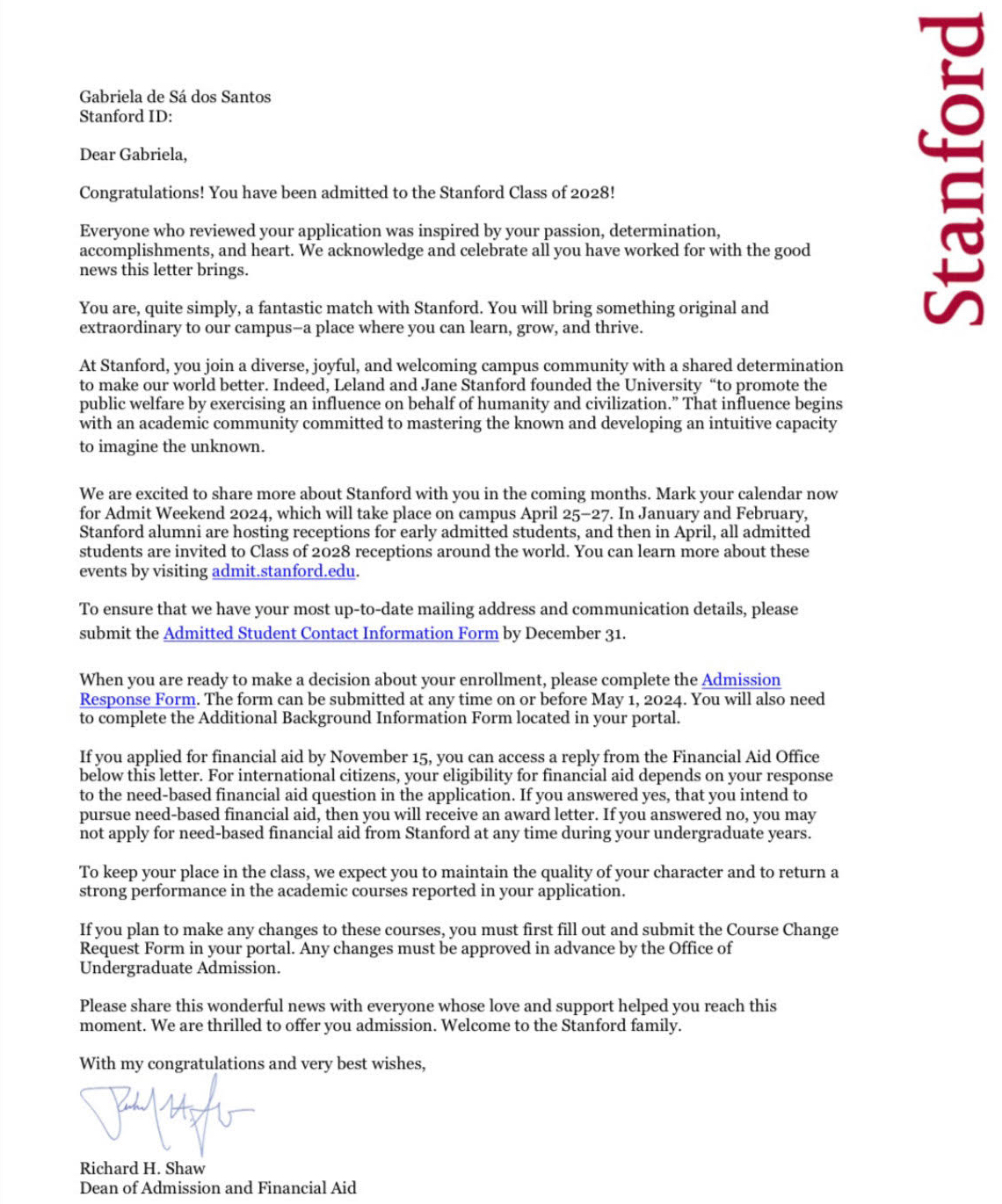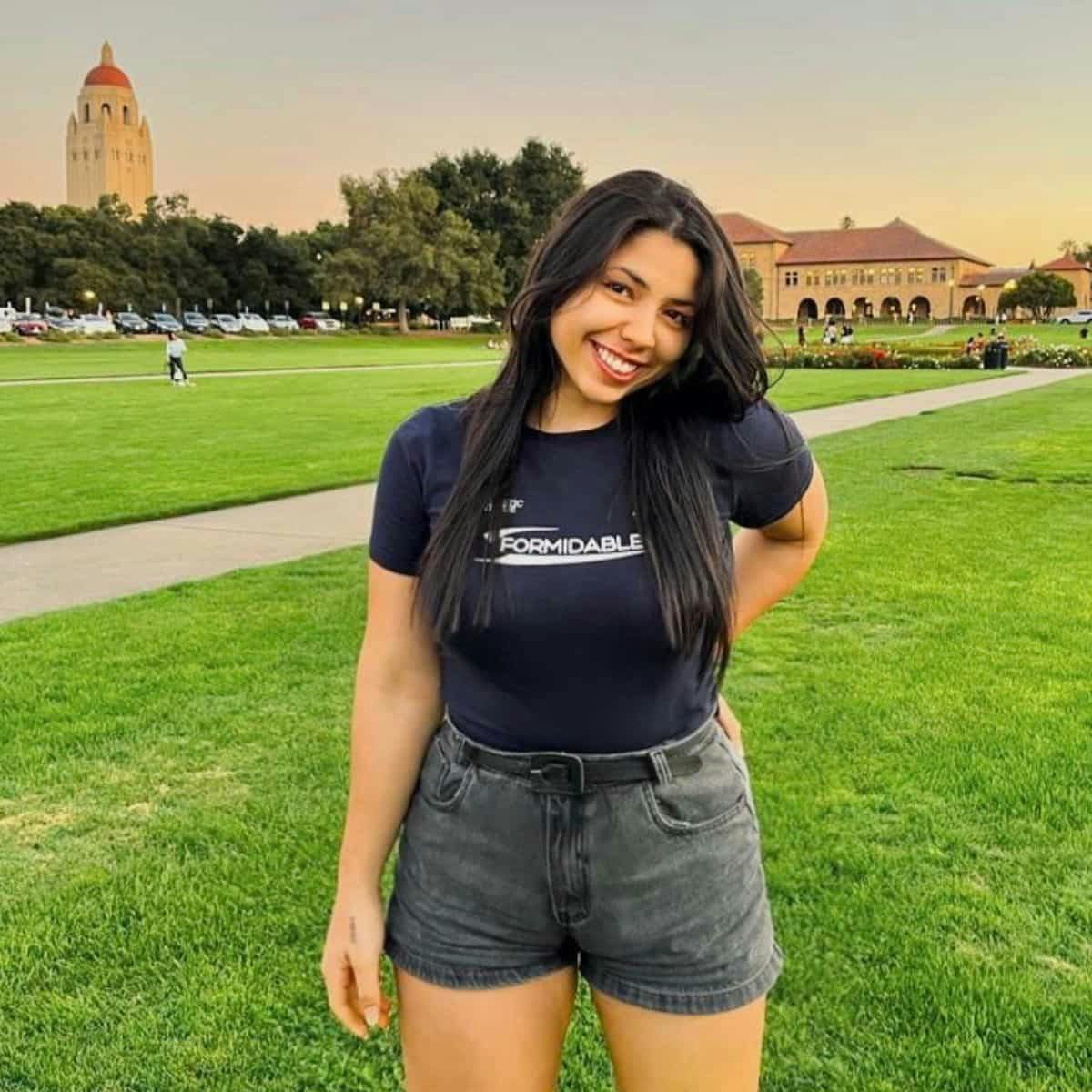My background and high school
My name is Gabriela and I'm from a very small town in Brazil, Aquidauana, which is essentially the gateway to the Pantanal Wetland. I attended a public school, part of a big school chain in Brazil known as Instituto Federal (IF), which in English would be Federal Institute. It's where you get your regular high school education, but alongside the standard curriculum, we also pursue a technical degree.
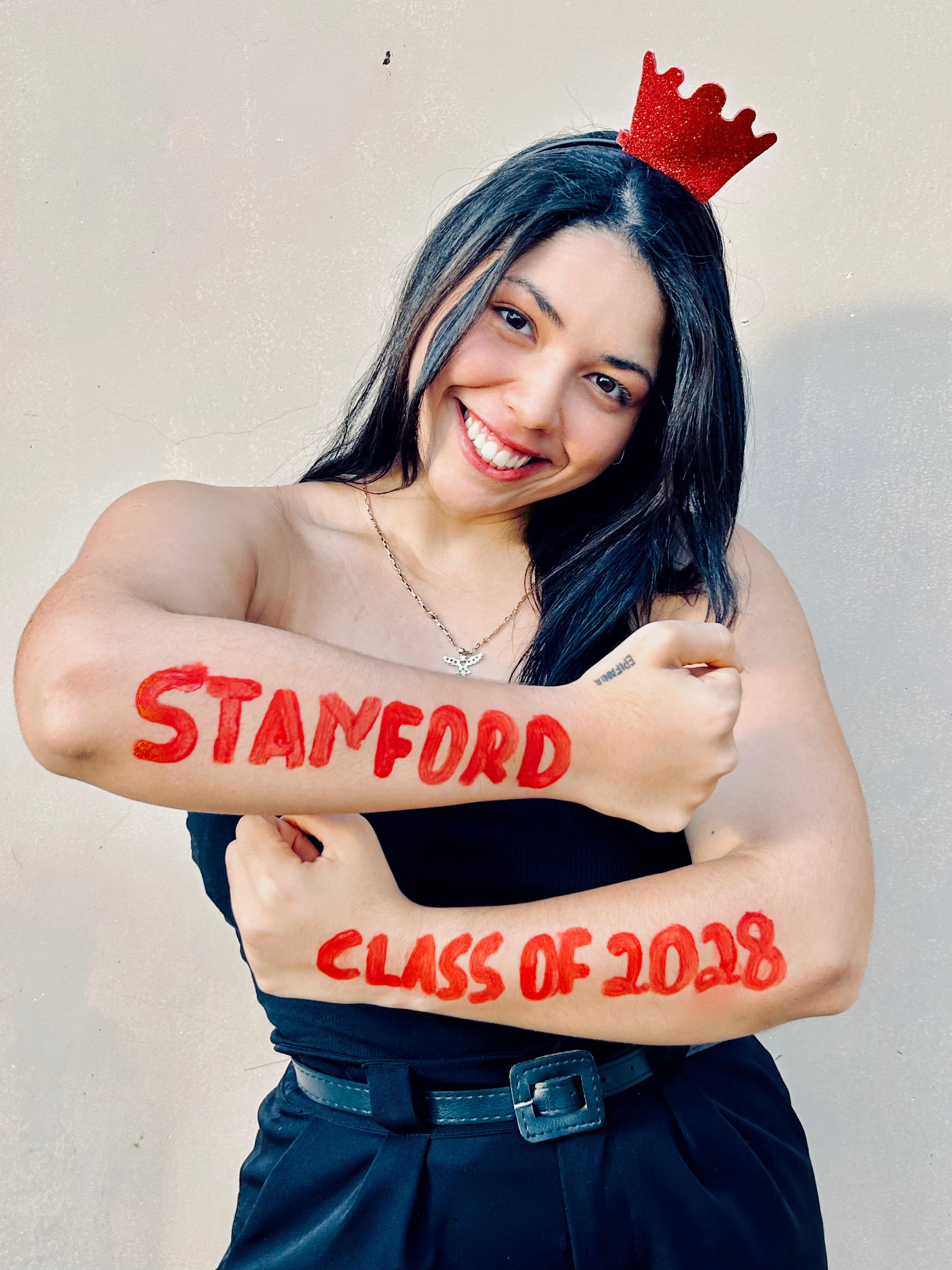
How I decided to study abroad
Growing up in Brazil, it seemed inherent for all of us as kids to dream about studying, living, and going abroad. When I was between 8 to 10 years old, I became obsessed with the Portuguese language. It's our native language, but it's incredibly hard, intricate and complex, which made me very interested in engaging with it. And then, around when I was 11 or 12, I got into K-pop and Korean dramas. I just loved how the Korean language sounded and wanted to learn it. But the thing is, in Brazil, there wasn't a way to learn Korean through Portuguese for free, and my mom wasn't going to pay for any courses. Eventually I found out I could learn Korean through English online for free. The problem was, I didn't know English. So, I ended up learning English as a way to learn Korean. And from there, my interest in languages just exploded. I ended up learning eight languages and really wanted to use them, to explore the world!
I always knew I couldn't do high school abroad because of my family's business, something we will get into later, and I couldn't just leave my city. But then I thought, what's stopping me from going to college abroad?
Mentorship programs & University Search
First off, I had a mentorship through programs designed to help students apply to schools abroad. Specifically, I was part of the Prep Program from Fundação Estudar, which is based in Brazil and targets Brazilian students—about 50 each year. It's run by one of the largest educational NGOs in Brazil. Getting into this program is tough; it has an acceptance rate of less than 1%. Additionally, I was part of Better Angels, a community-based organization in California. I got into Better Angels because they choose some low-income students from the Prep Program, conduct interviews, and then pick two. I was one of those two selected from my Prep Program batch. Although direct applications to Better Angels are possible, I wasn't aware of that option at the time.
It was in these programs where we were tasked with researching universities. What we did was research 30 colleges, categorizing them into 10 dream schools, 10 safety schools, and 10 target schools. We used spreadsheets that included information like the acceptance rate, personal comments, scholarship opportunities, and SAT score ranges, among other details.
Why Stanford
There were multiple reasons for my interest in Stanford. One major factor is my background; I come from the Pantanal region in Brazil, which is extremely hot. This made me certain I didn’t want to attend a college in a very snowy location, like those in the Boston area or the University of Rochester, the most snowy college in the US.
What also drew me to Stanford, beyond the climate, were my extracurricular activities and my short-term goals involving mobile app development. I wanted a university that had professors with expertise in that area and offered more than just one class focusing on mobile applications. Stanford was the only college I found that had significant research, incredible professors, investment, and resources in mobile applications.
For my long-term goal, I want to create a social organization focused on preventing youth from entering crime and helping people who have been in jail reintegrate into society. This issue is personal to me, as I've seen its impact in my own family and community. Stanford has an amazing class called "Digital Access and Change in Under-Resourced Communities," which aligns with what I want to do—provide digital access and literacy to under-resourced communities. Also, the remarkable entrepreneurial spirit at Stanford completely matches this long-term goal.
Additionally, Stanford's high academic level and the co-term program, which allows you to get your master's and bachelor's degrees in five years, appealed to me. It seemed very efficient. Getting a master's at Stanford if you're not already a Stanford student is very hard, but it's much easier if you're a Stanford undergrad. This combination was amazing to me because Stanford was one of the few colleges where I felt I wanted to spend more than four years.
Also, the ease of switching and dropping classes at Stanford is amazing. And most importantly, the fact that you can register to attend graduate school classes as an undergrad is incredible.
I also got to visit Stanford, which was a very unique experience. I visited many US colleges, especially in the Boston area, because of a summer program, but Stanford was different. When I stepped onto campus, I felt such a deep connection; I was really happy there. At other colleges like MIT, Wellesley, Tufts, Harvard, it was cool, but that was it. At Stanford, I almost cried because I felt so strongly that I wanted to be there. It made sense to me; it was a place where I felt comfortable and excited to be.
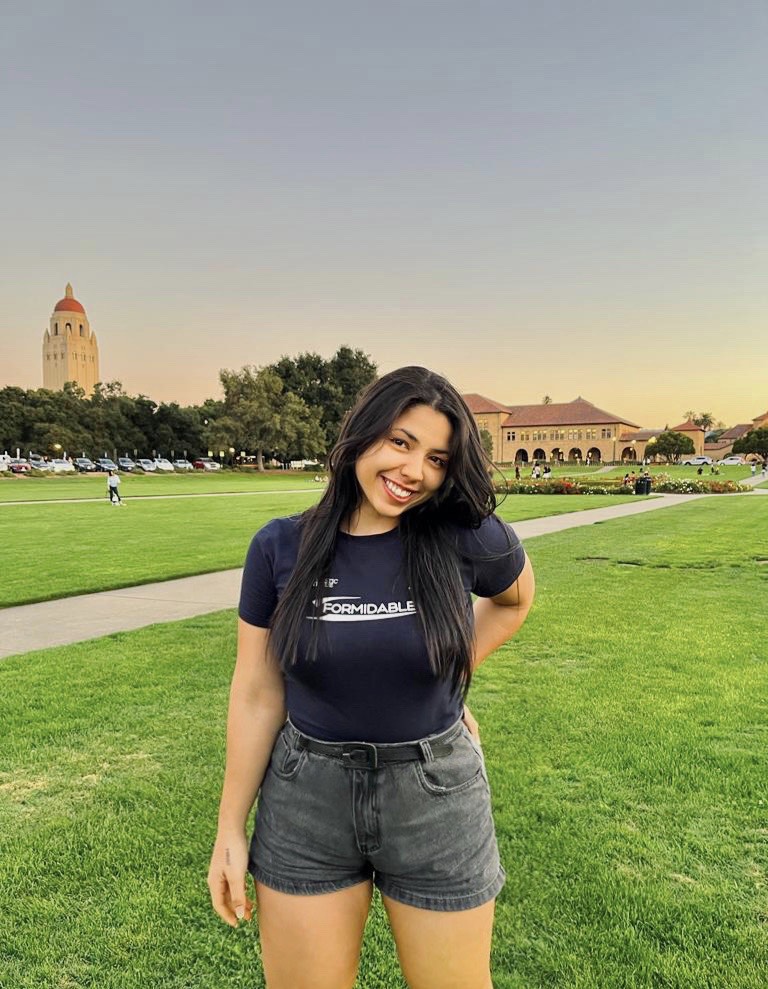
Extracurricular Activities
My top extracurricular was the family business I started with my mom in 2017—a women's clothing business. I talked in the essays about how this business helped my mom escape the violence she was facing back in her last job, due to the lack of opportunities. We teamed up and launched this company, which turned out to have a significant impact. In my application I highlighted that I was responsible for developing the website, specifying the languages, frameworks, resources, and databases used, and achieving $1 million in revenue through over 10,000 sales. I discussed utilizing Facebook and Google Ads to expand our reach.
My second major extracurricular involved an app. I used stories from our female customers about domestic violence as inspiration to create a mobile app addressing this issue. This project, I believe, played an important role in my acceptance to Stanford. I mentioned in my application that the app was showcased to over a million people on TV by Global, the second-largest broadcaster worldwide, and that I pitched the app to Silicon Valley companies like Oracle and partnered with UNICEF in the United States.
Another project I described was creating a program to teach mathematics for Olympiads to under-resourced youth, funded by the government. Though not as strong as the other two, this project was meaningful, involving organizing and teaching classes, and preparing over 500 pages of lesson plans. Mentees from this program have won over 30 medals.
I also participated in PROMYS, the Program Mathematics for Young Scientists, recognized as one of the most prestigious math program globally. I was the first Brazilian to attend, receiving a scholarship for low-income students and conducting research on Fibonacci numbers, which I presented to professors at Boston University during a six-week residential program there.
Another extracurricular was my involvement with IMPA, Brazil's mathematics research institute, where I conducted research on advanced math topics with a university mentor, often presenting my work to various audiences.
Finally, I also highlighted being a polyglot, teaching myself languages through websites, apps, films, books, and teaching Korean and Spanish to over 300 people. I even sold 122 copies of a Spanish book and created the first personalized Korean course in Brazil. Additionally, I contributed subtitles for Rakuten Viki, a global streaming service focusing on Asian content, co-founded a student council, and taught computer skills to indigenous communities in my area.
Tests scores and grades
I took the Duolingo test for the first time around May or June of 2023, and I scored 135, which is essentially the minimum score required by every college. However, I didn't submit my score to Stanford because they don't require English Proficiency tests, so I didn’t see much reason to send them.
My GPA was 8.8 out of 10, which might not seem very high for top colleges, but it placed me in the top 2% of my class of 197 students. My counselor mentioned in his letter that I took the most demanding courses available and noted that failing classes is common at my school—if you score less than six, you have to retake the class. This happens to nearly everyone, but I was one of the very few who never had to retake a class, which is quite rare at my school.
Regarding the SAT, I ended up with a total score of 1480, and I submitted it to Stanford. I'm not particularly happy with my math score of 760 because I know it could have been better. The digital SAT's timer, which turns red and bounces as time runs out, really made me overwhelmed. I decided not to retake the SAT due to the high costs associated with traveling, staying in a hotel, and other expenses. I still believe my application demonstrated strong math skills, as I won 15 medals in math Olympiads.
Personal Statement
The brainstorming for my personal statement was quite a challenge, but it really began back in 2022 when I was applying to some programs. That was my first experience in having to think deeply about what aspects of my life could persuade a program to want me. I remember looking at the ceiling and thinking about what was so important to me that readers of my application could truly understand who I am and the experiences that have shaped me and my proficiency in mathematics and coding.
Coming from a family with a criminal background, for example, having an uncle who is currently incarcerated, and others who have been involved in crime in various states, influenced my perspective. My uncles, having worked exhausting jobs in agriculture and living in harsh conditions, saw crime as a viable path. This environment led me to ponder the impact of such a lifestyle and the limited views on success within my community, which believed that only thieves, traffickers, and gang members could thrive. My essay began with a story of my uncle breaking into our home, which led to my mom installing electric fences for protection.
I also talked about my upbringing in a brothel until I was three, discussing the realities of my family's situation and the lack of opportunities due to our socioeconomic status and Indigenous background. This narrative transitioned into how witnessing Indigenous protests inspired me to use language, specifically coding and mathematics, as a tool for advocacy within my community. By teaching math and coding to local kids and sharing real-life stories, I aimed to inspire a shift in perspective towards education as a viable path.
This journey from a background filled with crime to finding purpose in education not only changed me but also influenced my uncles to see education as a door to better opportunities. One aspired to become an agricultural engineer, while another wanted to be a cop, with me supporting their ambitions through mathematics. This path from crime and lack of opportunities to using the language of mathematics to create positive change in my community was the core of my personal statement.
Stanford’s Supplemental Essays
In the Stanford supplemental essays, I answered the prompt about an idea or experience that excites me about learning by discussing my journey with learning languages, starting with Korean because of my interest in K-pop dramas. This expanded into a broader appreciation for languages and the connections they helped create. One instance involved a Venezuelan woman, lost and fleeing from Venezuela to Brazil, who I was unable to help due to a language barrier. This motivated me to learn Spanish, which later enabled me to assist a distraught Colombian mother at JFK Airport, offering the support I couldn't provide previously.
In a note to my future roommate, I mentioned my love for dancing, singing, enjoying sweets, cooking, and my varied musical tastes, including K-pop and classical music. I wanted to convey my energetic personality and diverse interests.
For the essay about life experiences and character contributing to Stanford, I wrote the story of my mother and me starting a women's clothing business to escape the violence she faced. This venture not only changed our lives but also inspired me to create an app to combat domestic violence. This essay, I believe, made a big difference in my application. I felt this story was particularly compelling for Stanford, as it showed the impact I've made even as a teenager from a rural Brazilian background, while having an emotional depth.
Now let’s discuss the Short Questions. For the societal challenge question I discussed the power pursuit and its consequences including global poverty. Then next question was about how I spent my recent summers where I talked about how I recorded Spanish classes on YouTube, went to Ipanema Beach in Rio de Janeiro with my mother, experienced my first flight, presented my Fibonacci research at Boston University, baked pumpkin cakes, and prepared mathematics lessons for my project. Next, there was a historical moment or event I wished to witness. I shared how I'd love to see Arthur Avila, a Brazilian, the first in Latin America in years, to win the Fields Medal in 2014. This was very strategic because I discussed how I really want to change my Latin America community in terms of violence and giving them the potential to rise in education. For the extracurriculars essay I mentioned teaching Korean to two teenage twin girls and creating the first personalized Korean course in Portuguese for free. Finally, the five things important to me where I decided to be creative!
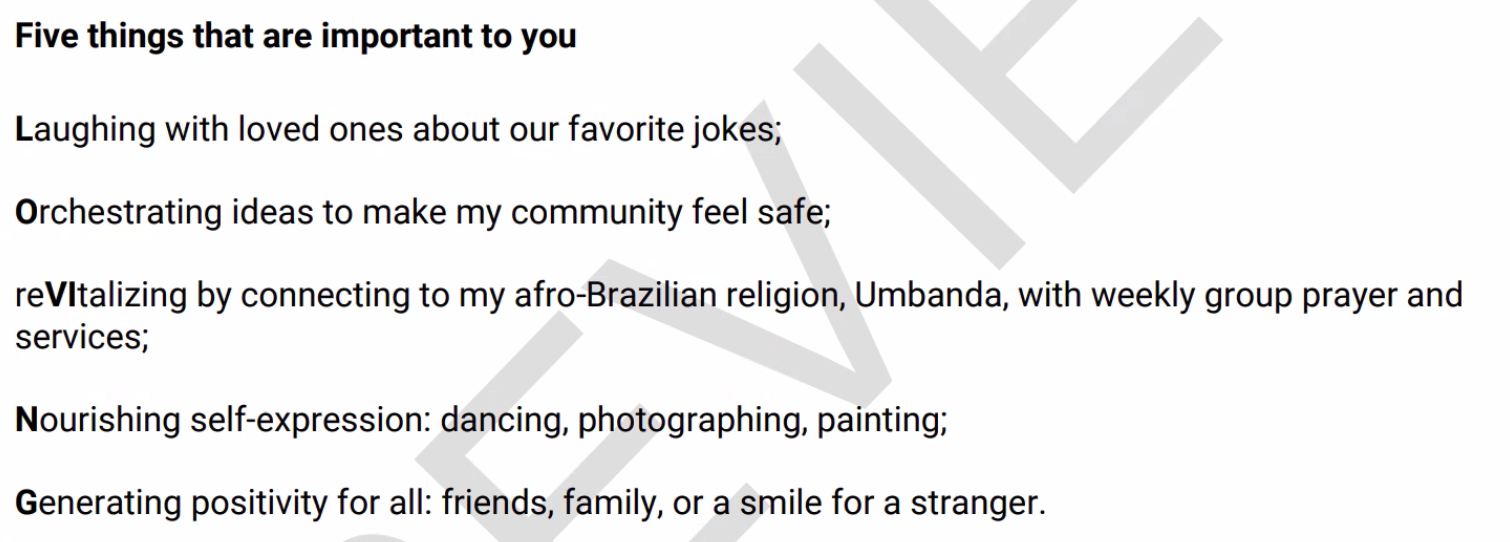
Hardest part of the application process
The hardest part of the process for me was definitely my own mindset. I didn't really struggle with the SAT or have issues with tests, essays, or interviews—I actually enjoy interviews since I talk a lot, which helps. But the real challenge was that I didn't believe in myself. I spent the year doubting because I was on a gap year, thinking this might put me at a disadvantage. And then, seeing my GPA at 8.8, while others around me complained about having a 9.3 or 9.5, made me feel inadequate. I worried whether my story, being somewhat heavy and uncommon, would be seen as a red flag by admissions, questioning if I was strong enough.
However, I had a lot of support from friends, mentors, and counselors who believed in me, always assuring me that I would succeed. This community of support was very important in overcoming the mental and emotional challenges I faced throughout the application process. I also remember in the beginning of 2023 reading Natalie's story about Stanford on Borderless, which helped me a lot. Getting to know her story helped calm me down and believe that it’s not impossible to get in.
Interview with Stanford
I applied on November 1st, just one hour before the deadline in my timezone, and received the interview request on November 9th. The interview itself took place on November 11th. It was conducted in English, which was unusual because I've seen many students doing their Stanford interviews in Portuguese recently. My interviewer had an MBA from Stanford, and the whole experience was extremely relaxed. It lasted for one hour and 15 minutes, which is longer than usual. We just lost track of time, which I took as a positive sign.
The interview focused on my story and was more like a genuine conversation. He asked about my reasons for wanting to study abroad, what I did for fun, and divided into my background with many follow-up questions to go deeper into my experiences. During the interview, I even cried twice because the conversation would get quite emotional. After I was accepted, he was kind enough to send me WhatsApp messages, congratulating me and expressing his pride.
Financial Aid
I did receive the initial financial aid letter, but the final one hasn't been issued yet. I received a scholarship covering tuition, room, and board, and it's expected that I will need to cover my health insurance and other indirect costs. I am still waiting for the final letter, but I will definitely have to pay for some expenses since I do have the financial means to contribute.
For the financial aid application, I submitted the CSS Profile. Stanford also has its own form for assessing family contribution, called the International Student Supplement, which asks how much your family can afford to pay. Stanford didn't request any additional documents to verify this information.
Advice for applicants
Being from a low-income background and Latin America, I'd say it's important to know there are many opportunities for us in the US. There are success stories of people coming from the countryside of Peru, Brazil, Argentina, etc., making it in the US.
The application process is tough, very time-consuming, and emotionally demanding. Coming from disadvantaged backgrounds, we have to support each other. My advice is to reach out to others like you, succeeding or on the same path, and not do it alone. The application process feels lonely in Latin America because the college system doesn't operate like it does in the US, leaving you on your own while your friends apply to national universities.
It can be very hard, but if you're strong enough to seek help and mature enough to accept it, you'll succeed and help others do the same. I hope my story can inspire and support others. I've been committed to sharing my application journey to help as many people as possible, especially those from low-income backgrounds. Since beginning my application process, I've wanted to share everything to aid others. This is a big reason why I'm here sharing my story!
